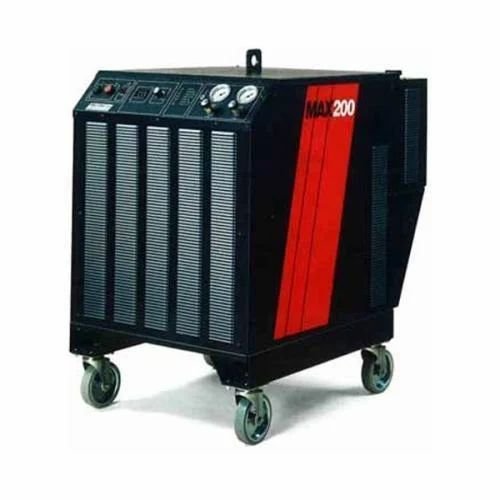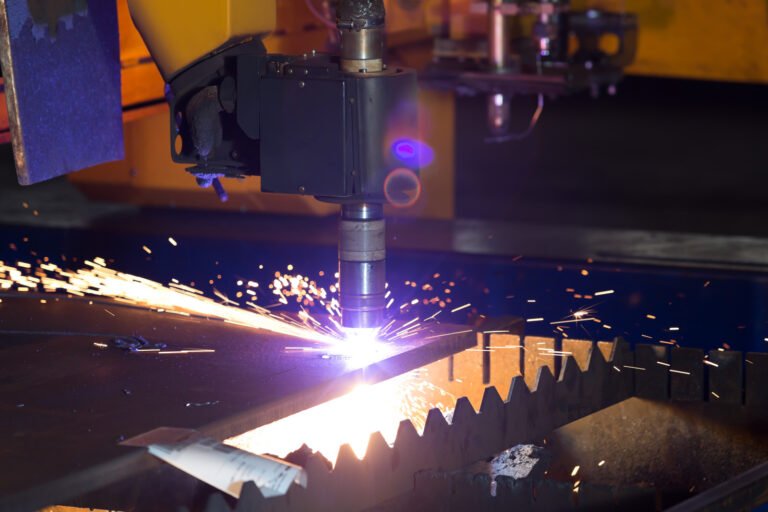The Ultimate Guide: 15 Questions Answered About Plasma Cutting
1. What is plasma cutting?
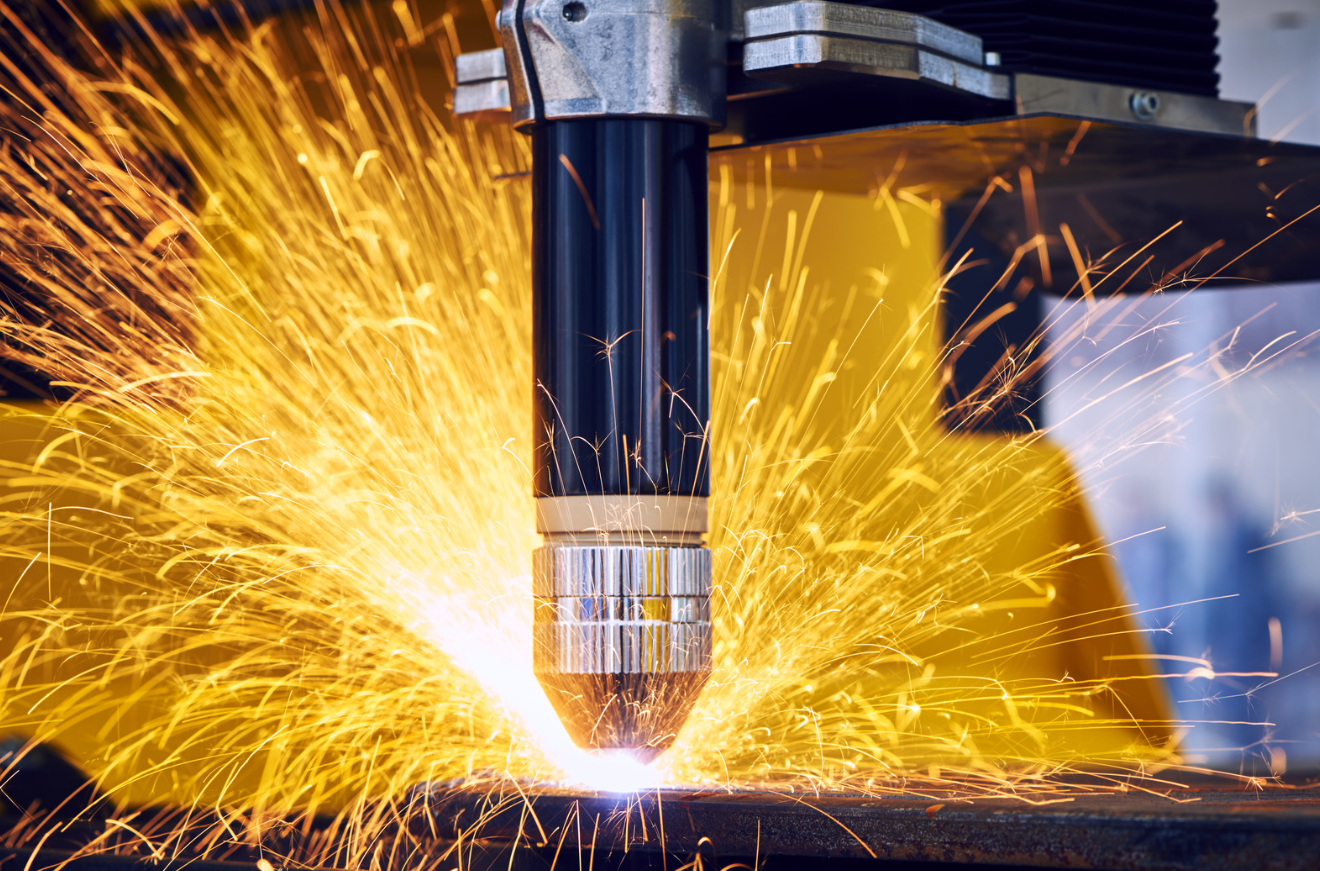
Plasma cutting is a process that uses a high-velocity jet of ionized gas, known as plasma, to cut through electrically conductive materials such as metals. The plasma conducts electricity from a power source to the workpiece, generating enough heat to melt the material and blow away the molten metal with the high-speed gas flow, resulting in a clean and precise cut. This method is commonly used in various industries such as automotive, manufacturing, aerospace, and construction for cutting steel, aluminum, brass, copper, and other conductive metals.
2. How does plasma cutting work?
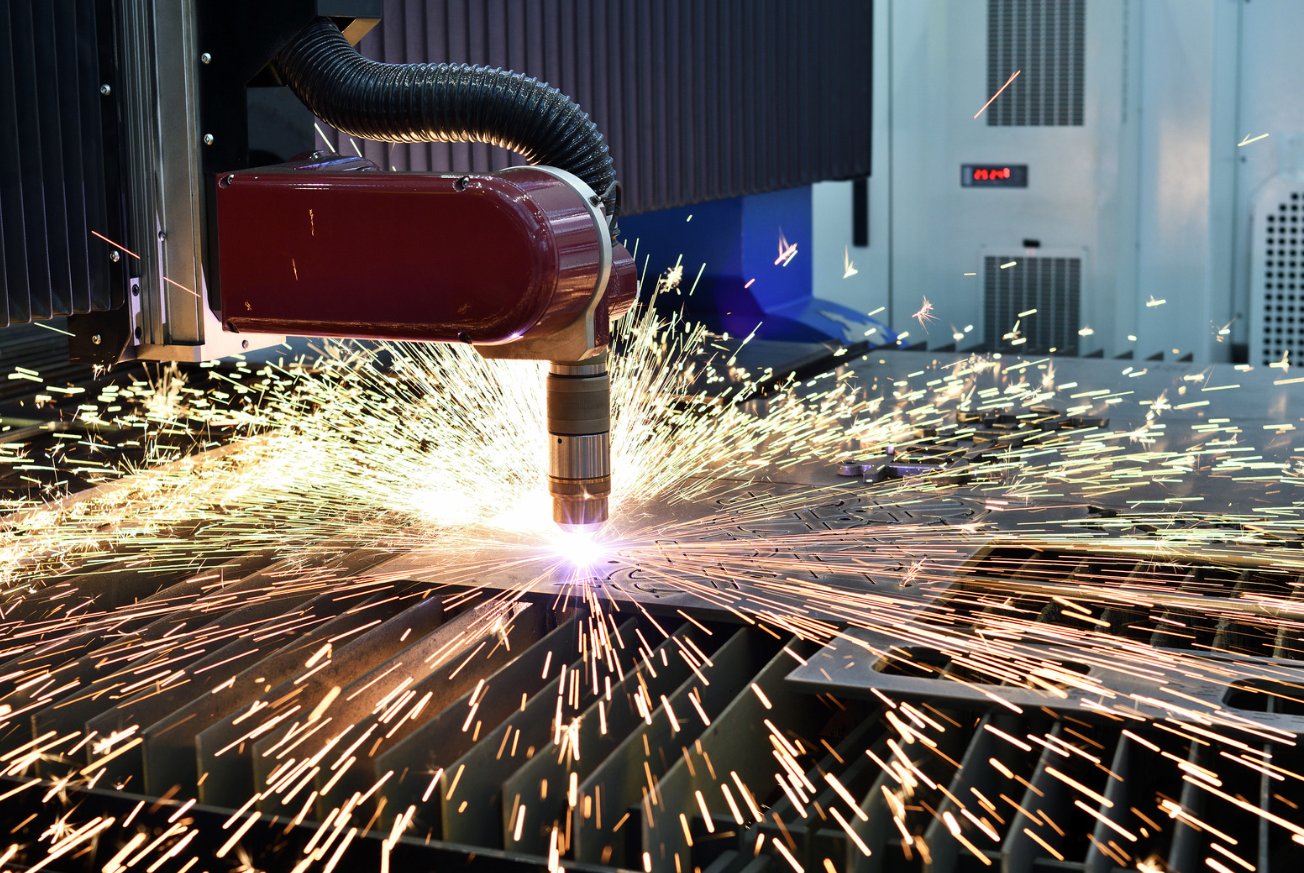
Plasma cutting is a method of cutting conductive materials (e.g. metals) using high speed ionized gas (plasma). As the gas (e.g., compressed air) passes through the nozzle of the cutting machine and creates an arc with the workpiece, the gas is converted into high-temperature plasma. This fiery plasma jet is accelerated in the nozzle and sprayed directly at the workpiece. The high temperature of the plasma melts the metal and the high speed air stream scrapes off the molten metal, creating a neat, precise cut. This cutting method is widely used in the automotive, manufacturing, aerospace and construction industries to quickly and accurately cut conductive metals such as steel, aluminum, copper and brass.
3. What is plasma arc cutting?
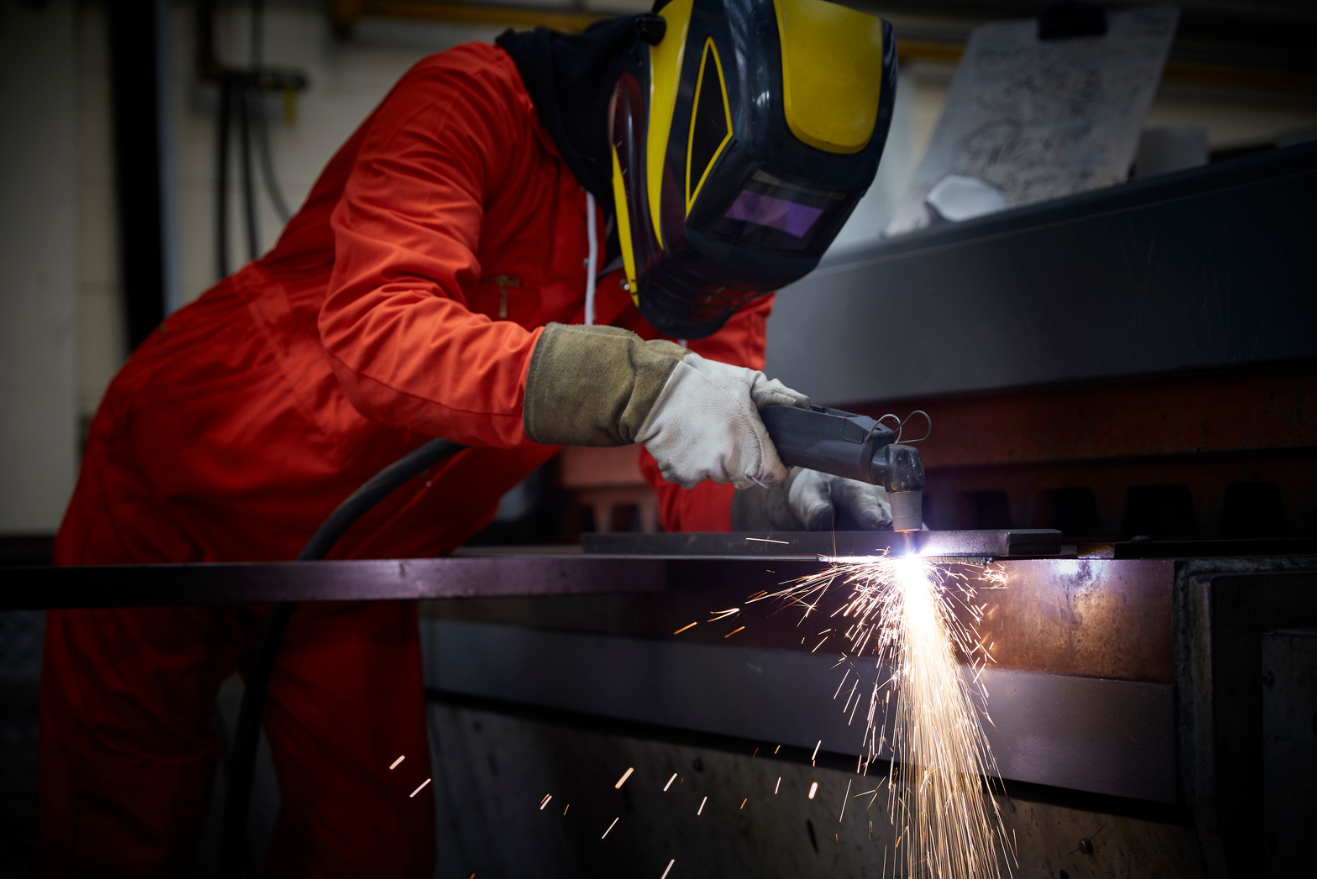
Plasma arc cutting is a metal cutting process that utilizes a high-velocity jet of ionized gas, or plasma, generated by an electric arc to cut through electrically conductive materials. The electric arc forms between an electrode inside the cutting torch and the workpiece. When the gas flows through the arc, it gets heated up and transforms into plasma. This highly energized plasma jet then melts the material, and the high-speed gas flow blows away the molten metal to create a clean and precise cut. Plasma arc cutting is widely used in various industries such as automotive, manufacturing, aerospace, and construction for cutting materials like steel, aluminum, brass, copper, and other conductive metals.
4. What is kerf in plasma cutting?
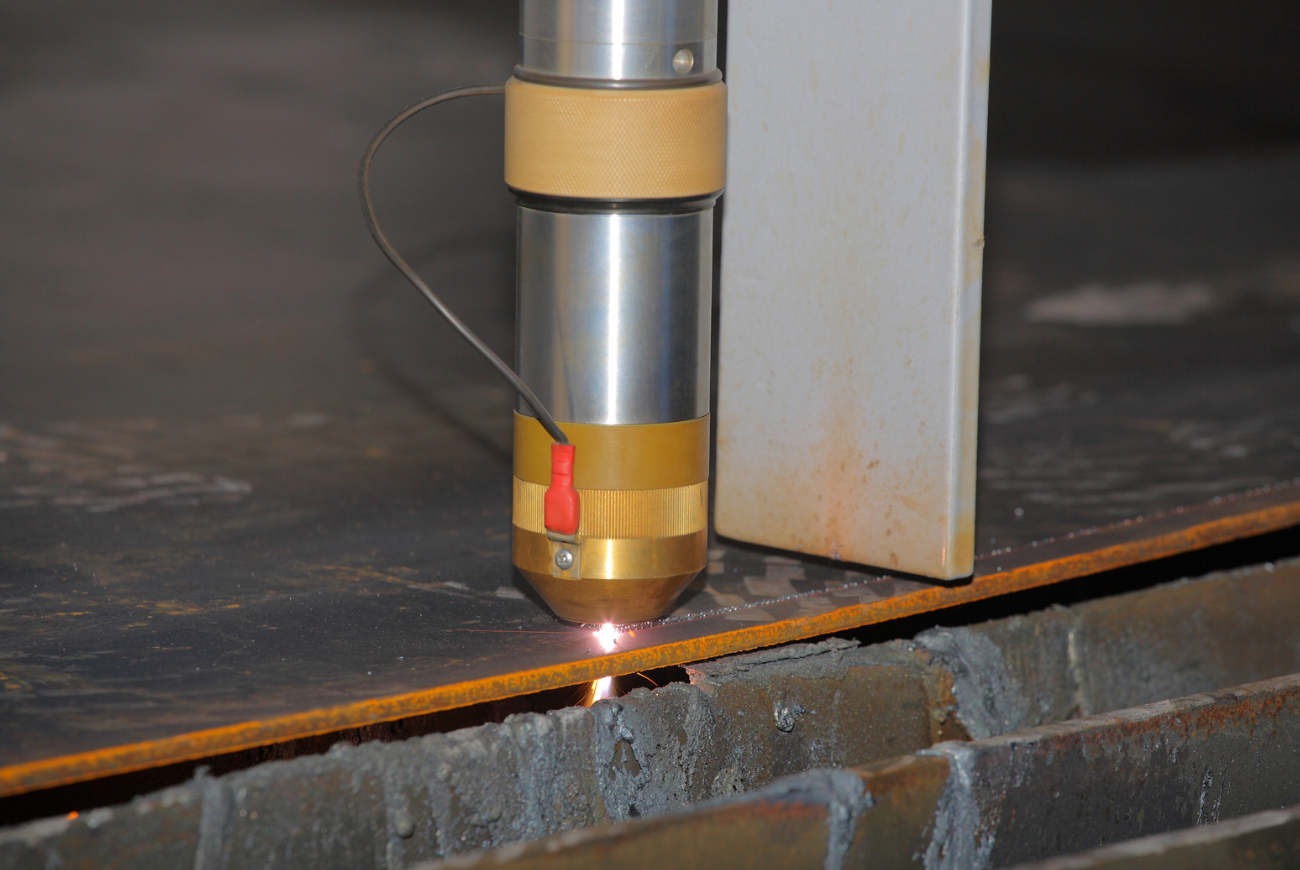
Kerf in plasma cutting refers to the width of the material that is removed during the cutting process. It is the gap created by the plasma cutter as it moves through the metal, essentially the “width” of the cut. The kerf width is an important consideration when determining cutting tolerances and part dimensions because it affects the accuracy of the cuts and the amount of material wasted.
Various factors influence the kerf width, such as the power of the plasma cutter, the type of nozzle, cutting speed, and the thickness and type of material being cut. By optimizing these factors, one can achieve minimal kerf width and maximize both the cutting precision and material utilization.
5. What is dross in plasma cutting?
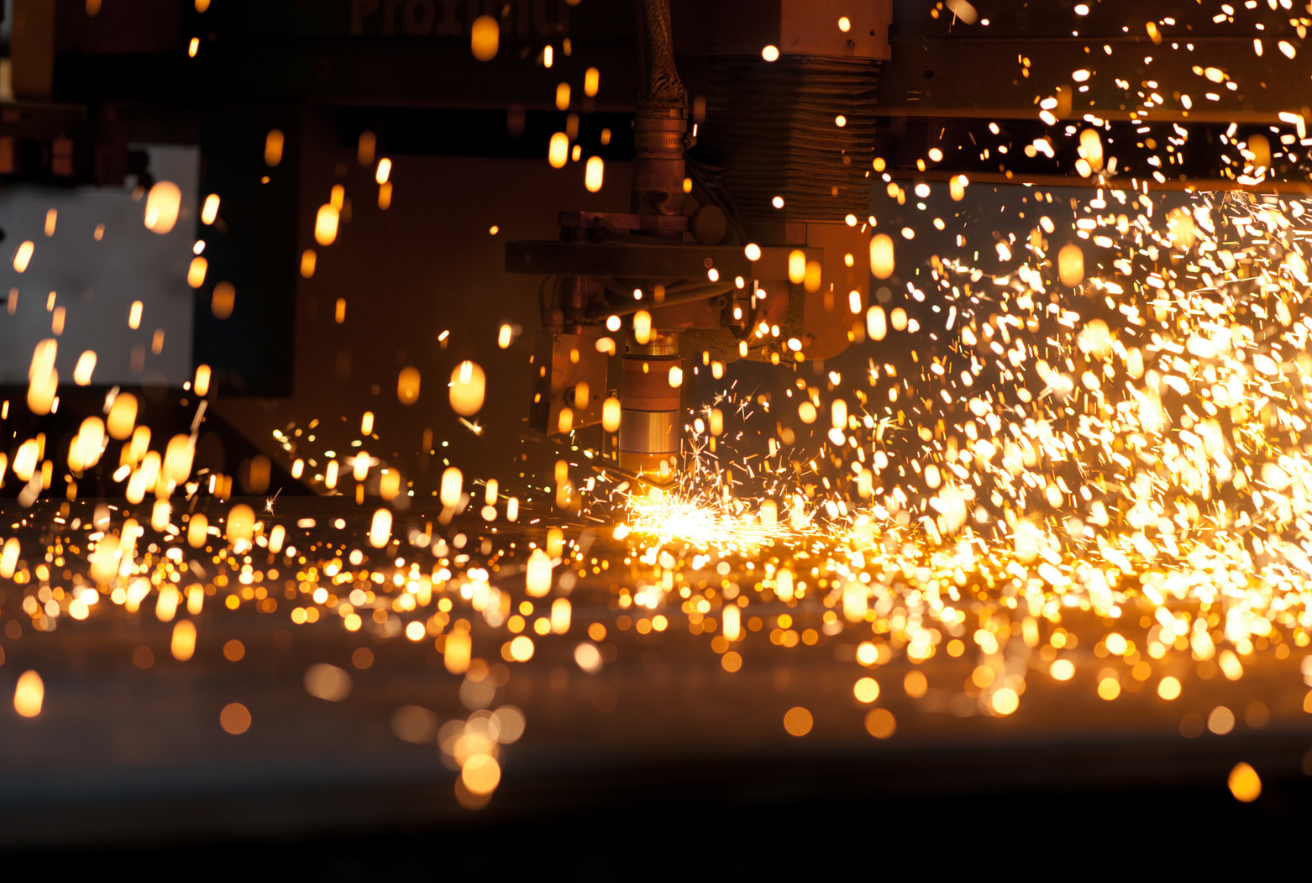
Dross in plasma cutting refers to the unwanted, rough, or solidified metal that forms along the edges of a cut during the cutting process. It occurs when the molten metal fails to be completely blown away from the cut due to insufficient energy, incorrect cutting speed, inadequate gas flow, or misaligned cutting torch. Dross can impact the quality and appearance of the cuts and often requires additional cleanup or grinding to remove it, which leads to increased labor and production costs.
To minimize dross formation, it is essential to optimize the plasma cutting parameters, such as power output, cutting speed, gas flow, and torch height, as well as to maintain the proper alignment of the torch and use high-quality consumables. This way, the cut edges will have a smoother and cleaner appearance, reducing the need for post-cutting cleanup.
6. How hot is plasma cutting?
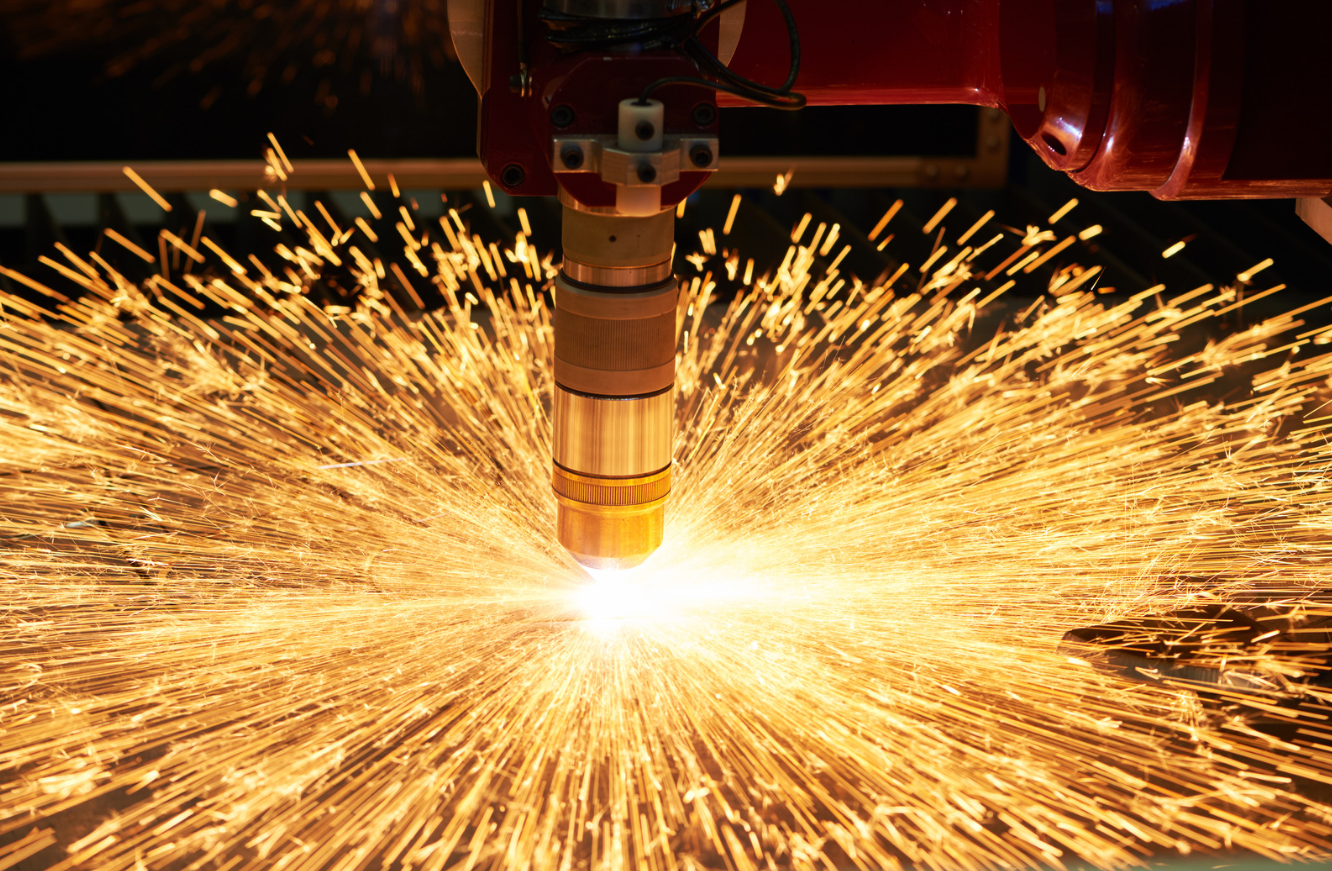
Plasma cutting generates extremely high temperatures, with the plasma jet reaching temperatures between 20,000 to 45,000 degrees Fahrenheit (11,000 to 25,000 degrees Celsius) or even higher, depending on the power settings and the type of gas being used. This extreme heat provides the necessary energy to melt electrically conductive materials, such as metals, and enable the high-velocity gas jet to blow away the molten material, resulting in a clean and precise cut. The very high temperature of the plasma jet allows for fast and efficient cutting of various materials, making it a popular choice for many industries, including automotive, manufacturing, aerospace, and construction.
7. What are the advantages and disadvantages of plasma cutting?
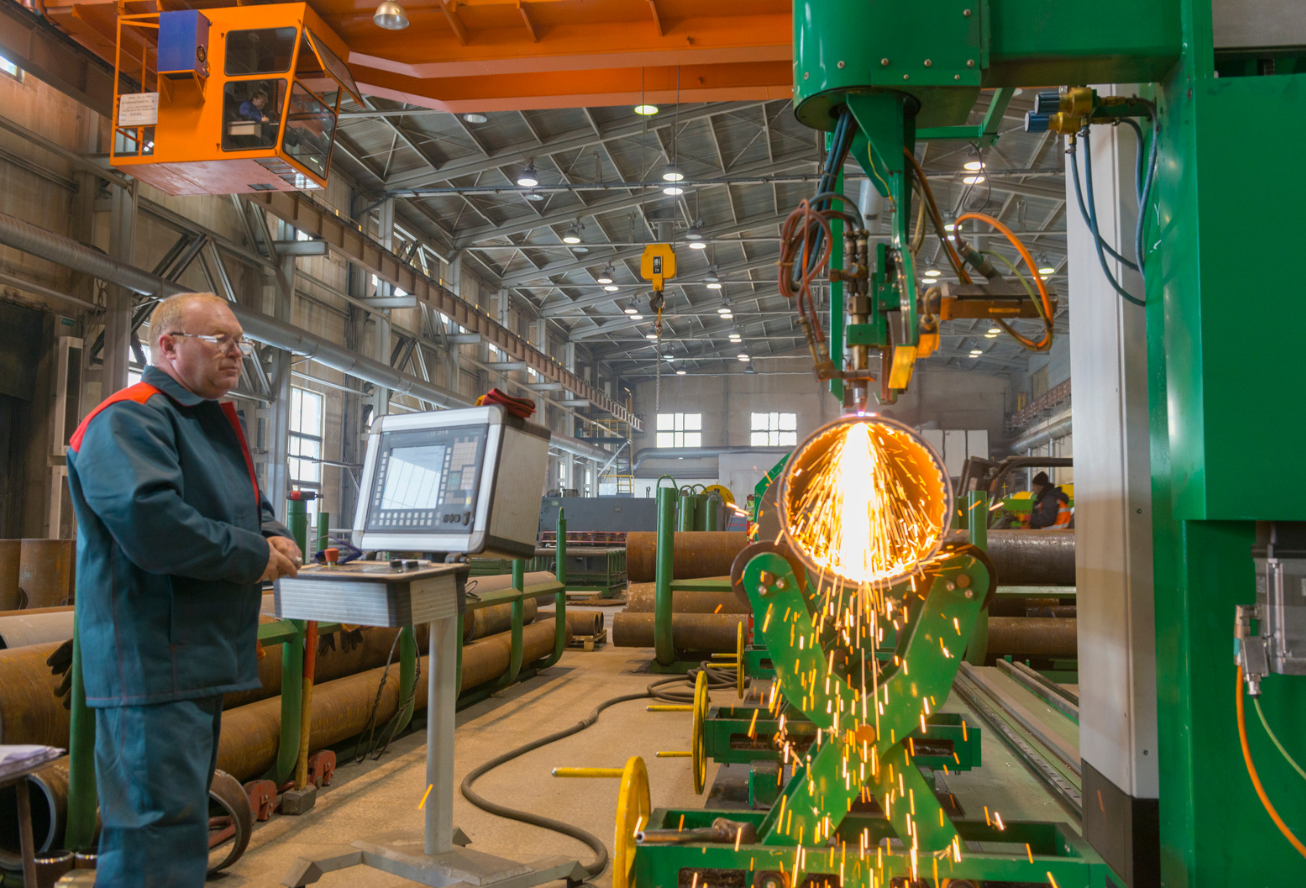
Advantages of plasma cutting:
1. Fast and efficient: Plasma cutting is a high-speed cutting process that can cut through different types of conductive metals quickly, making it ideal for various applications in industries such as automotive, manufacturing, and construction.
2. Versatility: Plasma cutters can cut a wide range of electrically conductive materials, including steel, aluminum, brass, copper, and others, with varying thicknesses.
3. Precision: Plasma cutting delivers clean and precise cuts with relatively minimal distortion, resulting in a high-quality finish.
4. Non-contact process: The cutting torch does not physically touch the material during the cutting process, which reduces the risk of damage to the workpiece or the torch.
5. Limited heat-affected zone: The intense heat of the plasma jet is focused, resulting in a smaller heat-affected zone (HAZ) compared to other cutting methods, minimizing workpiece distortion and warping.
Disadvantages of plasma cutting:
1. Limited material compatibility: Plasma cutting can only be used for cutting electrically conductive materials, restricting its application for non-conductive materials.
2. Power consumption: Plasma cutting systems can consume substantial amounts of electricity, which may lead to higher operating costs.
3. Surface finish: Plasma cutting may produce dross or rough cut edge that require additional cleaning or finishing, increasing labor and production costs.
4. Noise and fumes: Plasma cutting can produce loud noise and toxic fumes during the cutting process, necessitating proper ventilation and hearing protection for operators.
5. Equipment and maintenance: Plasma cutting systems and consumables can be expensive, and the equipment requires regular maintenance to ensure optimal performance.
8. What are the two primary types of plasma arc cutting processes?

The two primary types of plasma arc cutting processes are:
1. Conventional Plasma Cutting
Also known as “air plasma cutting,” this process uses compressed air or nitrogen as the plasma gas. The electric arc forms between the electrode and the workpiece, ionizing the gas and creating plasma. Conventional plasma cutting systems operate at lower energy levels and produce comparatively wider kerfs. They are more suited for cutting thinner materials and are commonly used in small-scale operations, general fabrication, and maintenance due to their lower cost and ease of use.
2. High-Definition (HD) Plasma Cutting
This process uses a combination of gases, typically argon and hydrogen, and operates at higher energy levels. High-definition plasma cutting utilizes a more constricted arc, which results in narrower kerfs, higher cutting speeds, and improved cut quality. The process is also better suited for cutting thicker materials with greater precision. HD plasma cutting is generally used in more advanced applications, such as precision engineering, aerospace, and other industries that require a higher degree of accuracy and repeatability. This method requires more advanced equipment, making it costlier compared to conventional plasma cutting.
9. What is CNC plasma cutting?
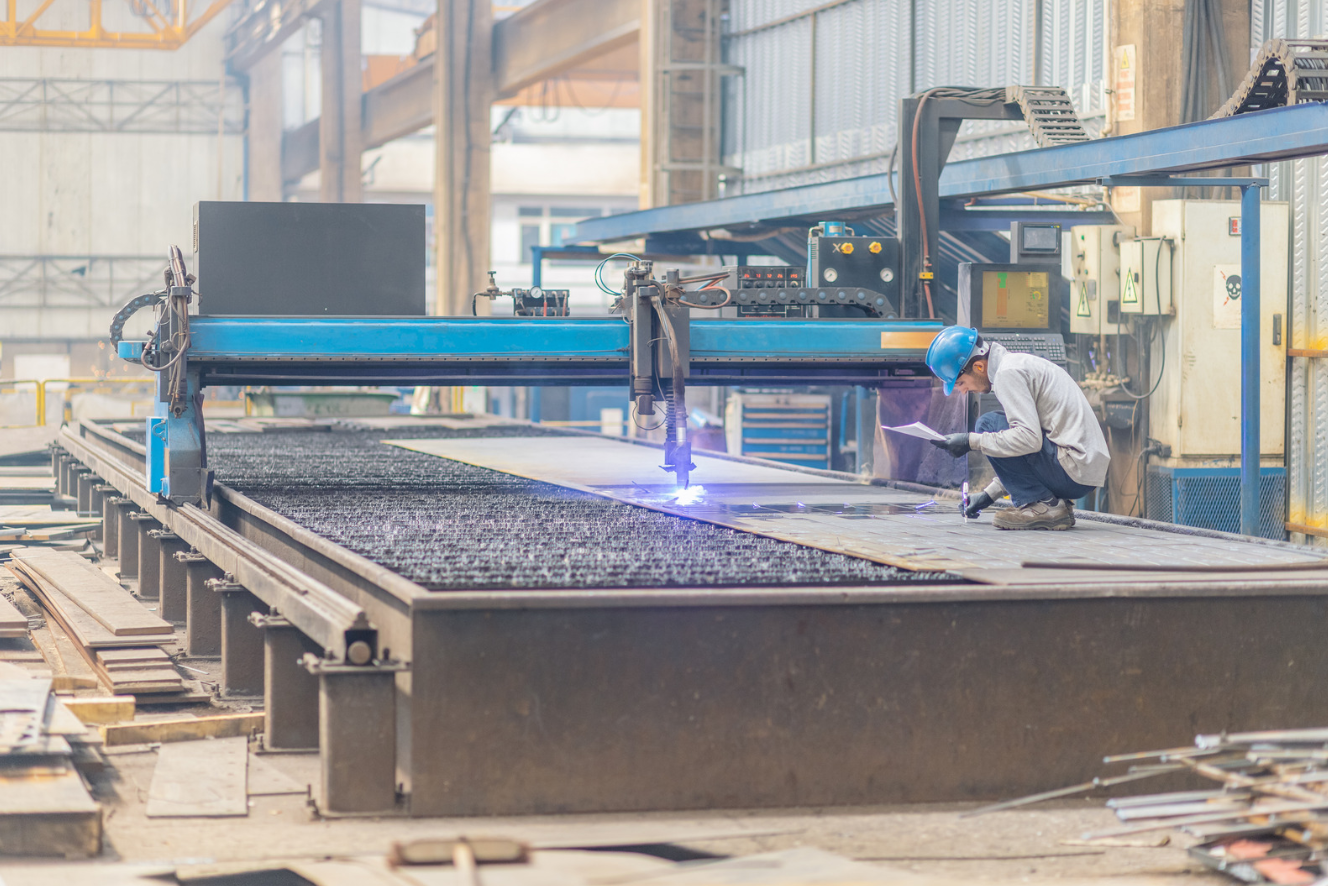
CNC (Computer Numerical Control) plasma cutting is a process that involves the use of a plasma cutting torch controlled by a computer to cut electrically conductive materials, such as metals, with high precision and accuracy. The CNC machine follows programmed instructions in the form of numerical codes (G-codes), defining the cutting path, speed, and other parameters.
CNC plasma cutting provides several advantages over manual plasma cutting, including:
1. Greater precision: The computer-controlled cutting process ensures high levels of accuracy and repeatability, resulting in clean and consistent cuts.
2. Complex shapes and patterns: CNC plasma cutting machines can easily cut intricate shapes, patterns, and designs that would be difficult or impossible to achieve using manual processes.
3. Faster production: CNC systems can work at high speeds and automate multiple cuts, increasing productivity and decreasing production time.
4. Reduced material wastage: The precise control of the cutting process and the ability to optimize the cutting path minimizes material wastage, resulting in cost savings.
5. Improved safety: CNC plasma cutting machines allow operators to control the process from a safe distance, reducing the risk of injuries.
10. What is a CNC plasma cutting machine?
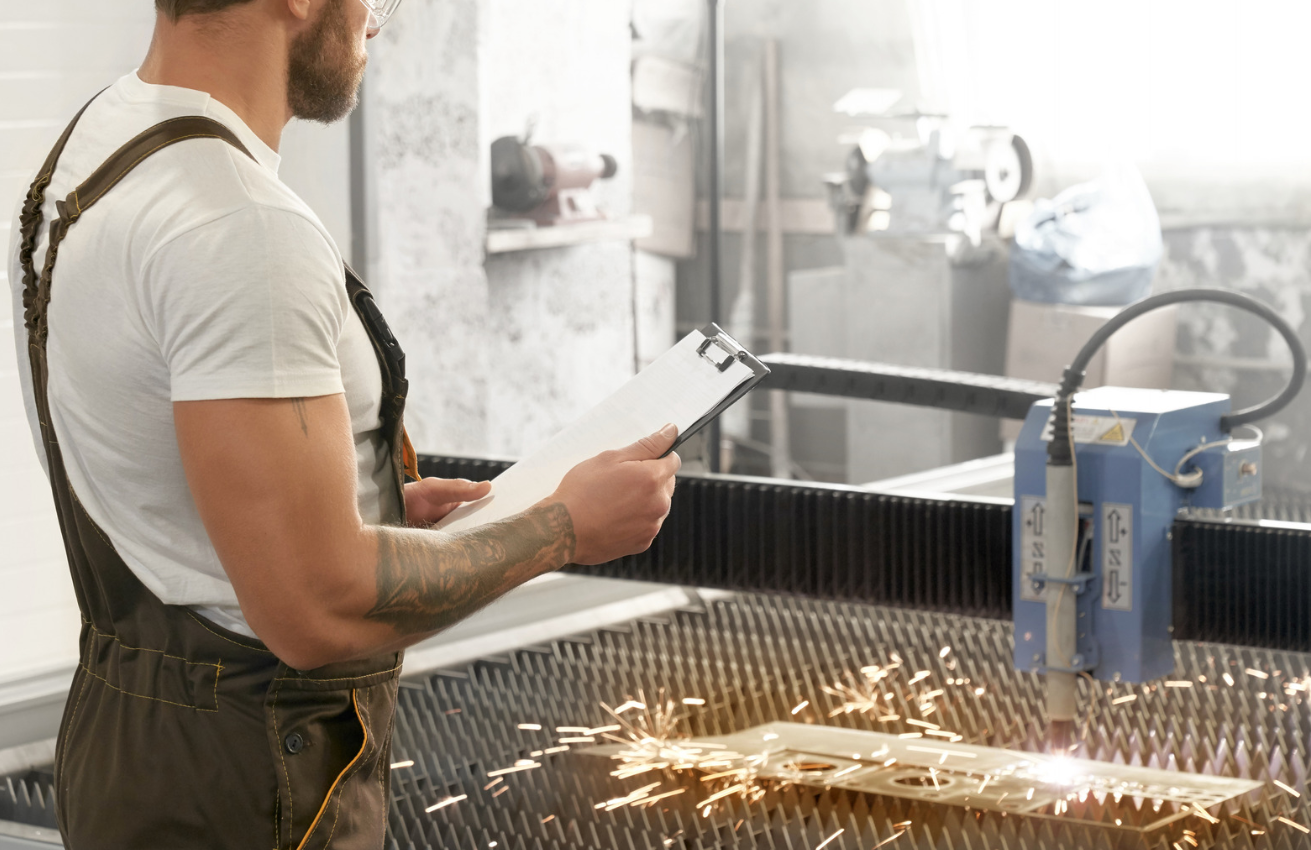
A CNC (Computer Numerical Control) plasma cutting machine is a computer-controlled cutting system that uses a plasma torch to precisely cut through electrically conductive materials, such as metals. The machine functions by following programmed instructions (G-codes) which define the cutting path, speed, and other cutting parameters. The key components of a CNC plasma cutting machine include:
1. Cutting table or work surface: This is where the workpiece is placed and secured for cutting.
2. Plasma torch: The device that generates the high-velocity plasma jet for cutting the material. The torch movement is controlled by the CNC system.
3. CNC controller: The computer system that translates CAD (Computer-Aided Design) files or drafted designs into G-codes and sends the instructions to the machine, controlling the plasma torch’s movements.
4. Drive system: Consists of motors, gears, and rails that facilitate the precise movement of the plasma torch along the X, Y, and Z axes.
5. Power source: Supplies the electrical energy needed to create and maintain the plasma arc.
CNC plasma cutting machines offer significant advantages over manual plasma cutting, enabling faster production, increased precision, less material wastage, and enhanced safety. They are widely used in various industries, including automotive, manufacturing, aerospace, and construction, to create high-quality metal parts and components.
11. How to build a CNC plasma cutting machine?

Constructing a CNC plasma cutting machine is a complex task that demands technical understanding, mechanical abilities, and the necessary components. The following list outlines the steps involved in building a CNC plasma cutting machine while incorporating the keywords power supply, air compressor, air pressure, and arc voltage:
1. Plan and design: Assess your cutting needs, including the cutting table size, materials to be cut, and the desired precision. Research and select suitable components for your requirements, such as the power supply and air pressure settings. Create a detailed plan and design using CAD (Computer-Aided Design) software.
2. Acquire components: Obtain essential parts for the CNC plasma cutting machine, including a cutting table or work surface, plasma cutter and torch, CNC controller, drive system (motors, gears, rails), power source, air compressor, and other assembly hardware.
3. Assemble the frame and cutting table: Build the frame based on your design, ensuring stability and sturdiness. Install the cutting table or work surface on the frame, making sure it is level and well-supported.
4. Install the drive system: Set up the X, Y, and Z-axis drive components (motors, gears, and rails) on the frame, ensuring smooth and precise movement.
5. Mount the plasma torch: Attach the plasma cutter and torch to the Z-axis assembly, making sure it is securely fixed and can accurately move up and down.
6. Set-up the CNC controller and power supply: Connect the CNC controller to the motors, plasma cutter, power source, and air compressor. Install the required software on a computer and configure it according to your machine specifications, including adjusting the air pressure and arc voltage settings.
7. Configure and test: Test and fine-tune the CNC machine settings, such as cutting speeds, torch height, and cutting parameters, for optimal performance. Perform test cuts to ensure precise and smooth operation.
8. Install safety features and accessories: Add safety components, such as limit switches, emergency stops, and protective guards, as well as additional accessories like a water table or fume extraction system, if needed.
9. Train and practice: Learn to operate the CNC controller, generate G-codes, and conduct essential maintenance tasks. Practice using various cutting programs and materials to enhance your proficiency with the CNC plasma cutting machine.
Ensure you follow safety guidelines and wear appropriate protective gear during the assembly and operation of the CNC plasma cutting machine. Additionally, consult experienced professionals for help if you encounter technical challenges or require assistance.
12. How to use Aspire software to layout plasma cutting?

Aspire software, developed by Vectric, is primarily designed for CNC routing, milling, and engraving, but it can also be used to create designs for plasma cutting with some adjustments. Follow these steps to use Aspire software to layout plasma cutting:
1. Launch Aspire software and create a new project: Set up your workspace by entering the dimensions of your material, thickness, and other relevant parameters.
2. Design your cut: Use the drawing tools available in Aspire to create your desired design or import vector files (such as DXF, DWG, SVG, or EPS) that you want to cut. Make sure to consider the kerf width of your plasma cutter while creating or editing your design.
3. Create toolpaths: As Aspire software does not have a dedicated plasma cutting toolpath, you will need to use the profile toolpath, which is usually meant for cutting with a CNC router. Go to the Toolpaths tab and create a profile toolpath for your design. Select the appropriate cutting depth, and choose the outside or inside cutting direction as needed.
4. Set up tool parameters: As plasma cutting is not a routing operation, you will need to create a custom “tool” that mimics the plasma cutter’s behavior. Create a new tool with a diameter equal to the plasma cutter’s kerf width, set the pass depth equal to the material thickness, and specify the cutting speed in the “Feed rate” field. This will simulate the plasma cutter in the Aspire software.
5. Generate G-code: After creating the toolpath, double-check your parameters and ensure everything is set correctly. Then, save the toolpath as a G-code file compatible with your plasma cutting CNC controller.
6. Import G-code to your CNC controller: Transfer the G-code file to your CNC plasma cutting system and perform a test run to ensure proper operation. If there are any discrepancies, make necessary adjustments in the Aspire software and re-export the G-code.
Please note that while Aspire can be used for designing and generating toolpaths for plasma cutting, it is not specifically designed for this purpose. There are dedicated software packages, such as SheetCAM or Hypertherm’s ProNest, designed for generating plasma cutting patterns and G-code files. Consider using such software for optimal results and advanced plasma cutting features.
13. How much does plasma cutting cost?
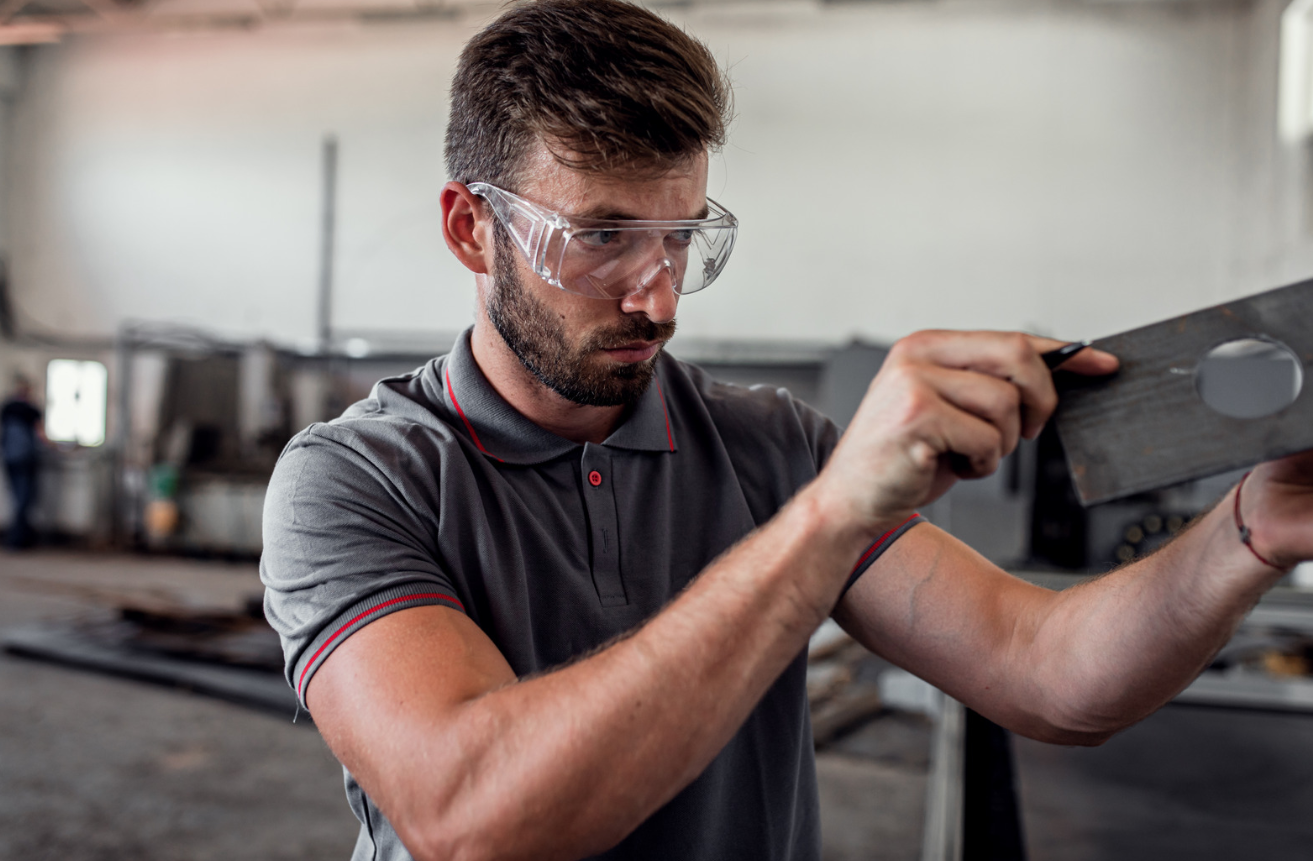
The cost of plasma cutting varies depending on several factors, including the type of cutting process (manual or CNC), material type and thickness, cut complexity, equipment and consumable costs, labor costs, and production volume. Here are some general guidelines:
1. Equipment cost: A manual plasma cutter can range from $500 to over $2,000, while CNC plasma cutting systems start at around $5,000 for basic setups and can exceed $40,000 for high-definition or large-scale machines.
2. Consumable costs: Plasma cutting requires consumables, such as electrodes, nozzles, and gas, which can add up over time. Consumable costs vary depending on usage, material type, and cutting parameters but can range from $1 to $4 per hour of cutting time.
3. Material costs: The cost of the material being cut, such as mild steel or aluminum, can vary based on market prices, thickness, and required cut dimensions.
4. Labor costs: Manual plasma cutting can have higher labor costs due to the time required for operators to set up and perform the cuts. CNC plasma cutting, on the other hand, has a higher initial investment but often requires less operator time, which can reduce labor costs over time.
5. Job complexity: Highly intricate cuts or those requiring multiple passes may increase the cost due to longer cutting time, additional labor, or increased consumable usage.
Overall, plasma cutting costs can vary widely based on the specific requirements, scale of production, and equipment being used. When outsourcing plasma cutting services, you may be charged a price per linear inch or be given a custom quote for the entire job. Prices can range from $0.40 to $3.00 (or more) per linear inch, depending on the complexity of the job and the service provider.
14. How much does a CNC plasma cutting table cost?

The cost of a CNC plasma cutting table depends on various factors, such as the size of the table, included features, cutting capabilities, and the overall quality of the system. Here is a general breakdown of the costs:
1. Entry-level systems: Smaller CNC plasma cutting tables with basic features and capabilities can start at around $5,000 to $8,000. These tables are suitable for hobbyists or small businesses with limited production needs.
2. Mid-range systems: Medium-sized CNC plasma cutting tables offering more features, better precision, and higher cutting speeds can cost anywhere between $10,000 and $30,000. These systems are suitable for more demanding applications, such as small to medium-sized fabrication shops and industrial settings.
3. High-end systems: Large, high-definition CNC plasma cutting tables with advanced features, better cutting accuracy, and capable of cutting thicker materials can range from $30,000 to over $100,000. These systems cater to industrial applications, precision engineering, and high-volume production environments.
The cost of a CNC plasma cutting table will also depend on the brand, additional components (such as a water table or fume extraction system), and software solutions included. Keep in mind that you also need to factor in the ongoing costs of consumables, maintenance, and the plasma cutter itself, if not included with the table.
15. How much does a computerized plasma cutting machine cost?
A computerized plasma cutting machine, also known as a CNC (Computer Numerical Control) plasma cutting system, varies in cost depending on the size, capabilities, cut speed, duty cycle, features, and quality of the system. Here is a general breakdown of the costs:
1. Entry-level systems: Basic CNC plasma cutting systems, suitable for hobbyists cutting thin materials and smaller workshops with limited production needs, can start at around $5,000 to $8,000. These systems usually have a lower cut speed and duty cycle.
2. Mid-range systems: Medium-sized CNC plasma cutting machines, designed for small to medium-sized fabrication shops and industrial settings, can cost anywhere between $10,000 and $30,000. They offer more features, better precision, and higher cutting speeds, making them suitable for a wider range of applications.
3. High-end systems: Large, high-definition CNC plasma cutting systems can range from $30,000 to over $100,000. These systems boast advanced features, improved cutting accuracy, and the ability to cut thicker materials at a faster cut speed. They cater to industrial applications, precision engineering, and high-volume production environments, with a higher duty cycle for sustained performance.
The cost of a computerized plasma cutting machine will also depend on the brand, additional components (such as a water table or fume extraction system), and software solutions included. Keep in mind that ongoing costs of consumables, maintenance, and the plasma cutter itself, if not included with the machine, should be considered as well.
Contact Us
Plasma Cutting Parts & Machine
Don’t hesitate to contact us. Lasersourcing’s product specialists are very happy to help you and provide a variety of flexible and reliable solutions to help you solve various problems.
Tel
+86-15370952128
lasersourcing@hotmail.com
15370952128
+86-15370952128


